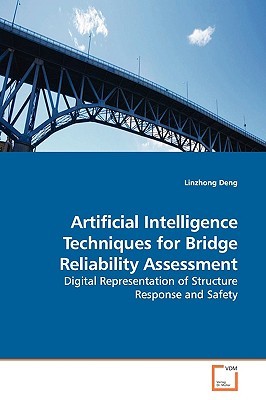
- We will send in 10–14 business days.
- Author: Linzhong Deng
- Publisher: VDM Verlag
- ISBN-10: 3639143884
- ISBN-13: 9783639143881
- Format: 15.2 x 22.9 x 1.1 cm, softcover
- Language: English
- SAVE -10% with code: EXTRA
Artificial Intelligence Techniques for Bridge Reliability Assessment (e-book) (used book) | bookbook.eu
Reviews
Description
Bridge safety is receiving more attention when some bridges lost their function in recent years. Are the bridges in service today still safe as they approach their designed service life? Will a bridge built today be able to safely carry traffic loads for its intended 75-year service life? This book answers such questions by developing Artificial intelligence techniques for bridge reliability assessment. The techniques presented include new analysis models of highway bridges, a new Shredding Genetic algorithm (SGA) that is efficient to identify dominant failure, and a new solver to improve the efficiency of nonlinear analysis. These techniques can be used to analyze the reliability of a structure that could not be analyzed by traditional methods. Plenty of on-site and full-scale bridge experiments are introduced to form a solid benchmark for bridge nonlinear analysis. Computer simulations of these experiments demonstrate the efficiency and applicability of the proposed algorithms. This book should be helpful in bridge design and research for large and complex systems, and can be used in the safety evaluation of the bridges in service.
EXTRA 10 % discount with code: EXTRA
The promotion ends in 16d.06:03:35
The discount code is valid when purchasing from 10 €. Discounts do not stack.
- Author: Linzhong Deng
- Publisher: VDM Verlag
- ISBN-10: 3639143884
- ISBN-13: 9783639143881
- Format: 15.2 x 22.9 x 1.1 cm, softcover
- Language: English English
Bridge safety is receiving more attention when some bridges lost their function in recent years. Are the bridges in service today still safe as they approach their designed service life? Will a bridge built today be able to safely carry traffic loads for its intended 75-year service life? This book answers such questions by developing Artificial intelligence techniques for bridge reliability assessment. The techniques presented include new analysis models of highway bridges, a new Shredding Genetic algorithm (SGA) that is efficient to identify dominant failure, and a new solver to improve the efficiency of nonlinear analysis. These techniques can be used to analyze the reliability of a structure that could not be analyzed by traditional methods. Plenty of on-site and full-scale bridge experiments are introduced to form a solid benchmark for bridge nonlinear analysis. Computer simulations of these experiments demonstrate the efficiency and applicability of the proposed algorithms. This book should be helpful in bridge design and research for large and complex systems, and can be used in the safety evaluation of the bridges in service.


Reviews